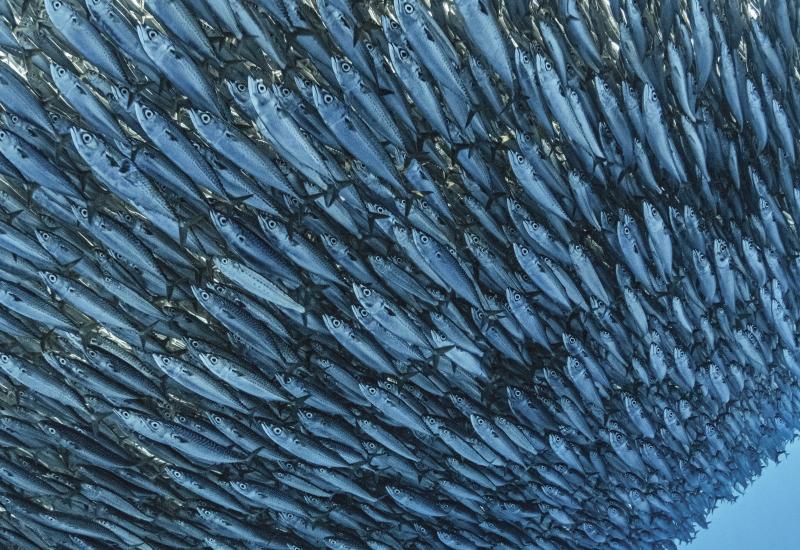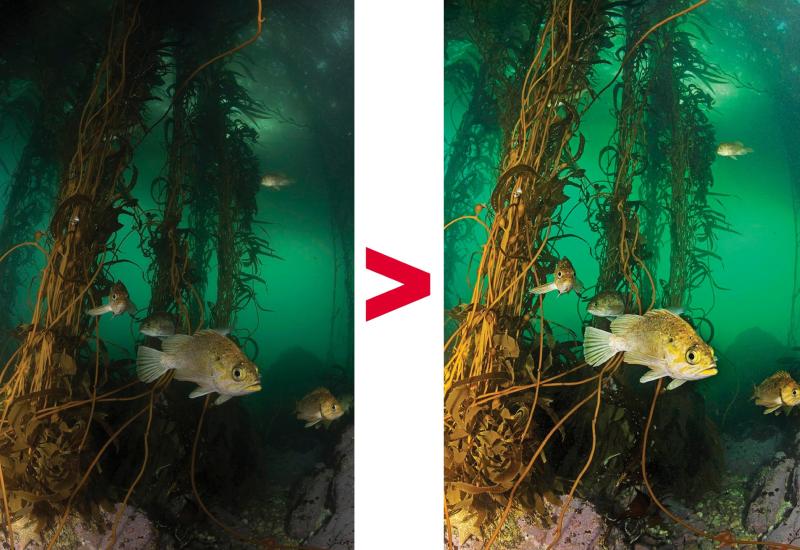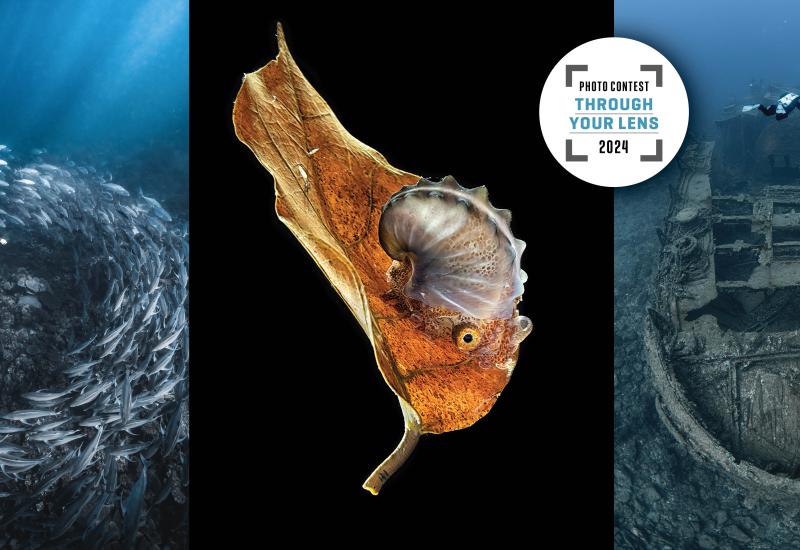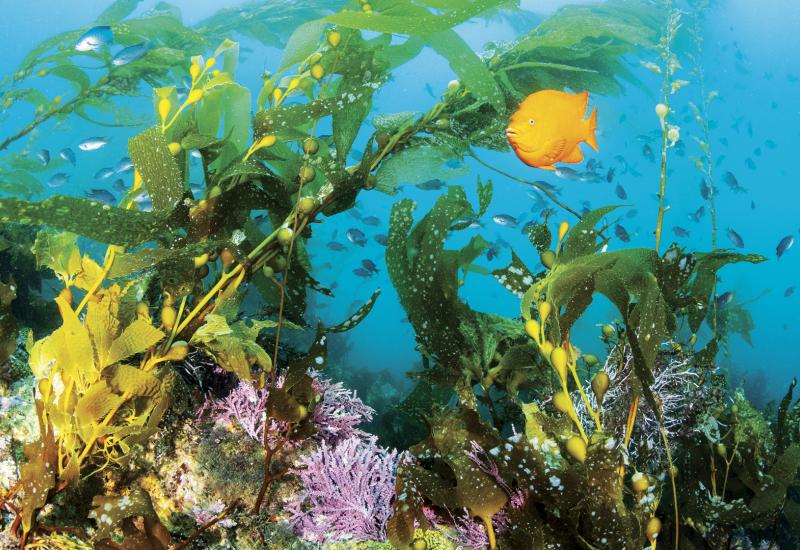The Invisible Ocean: A Dive Into the World of Microscopic Marine Life
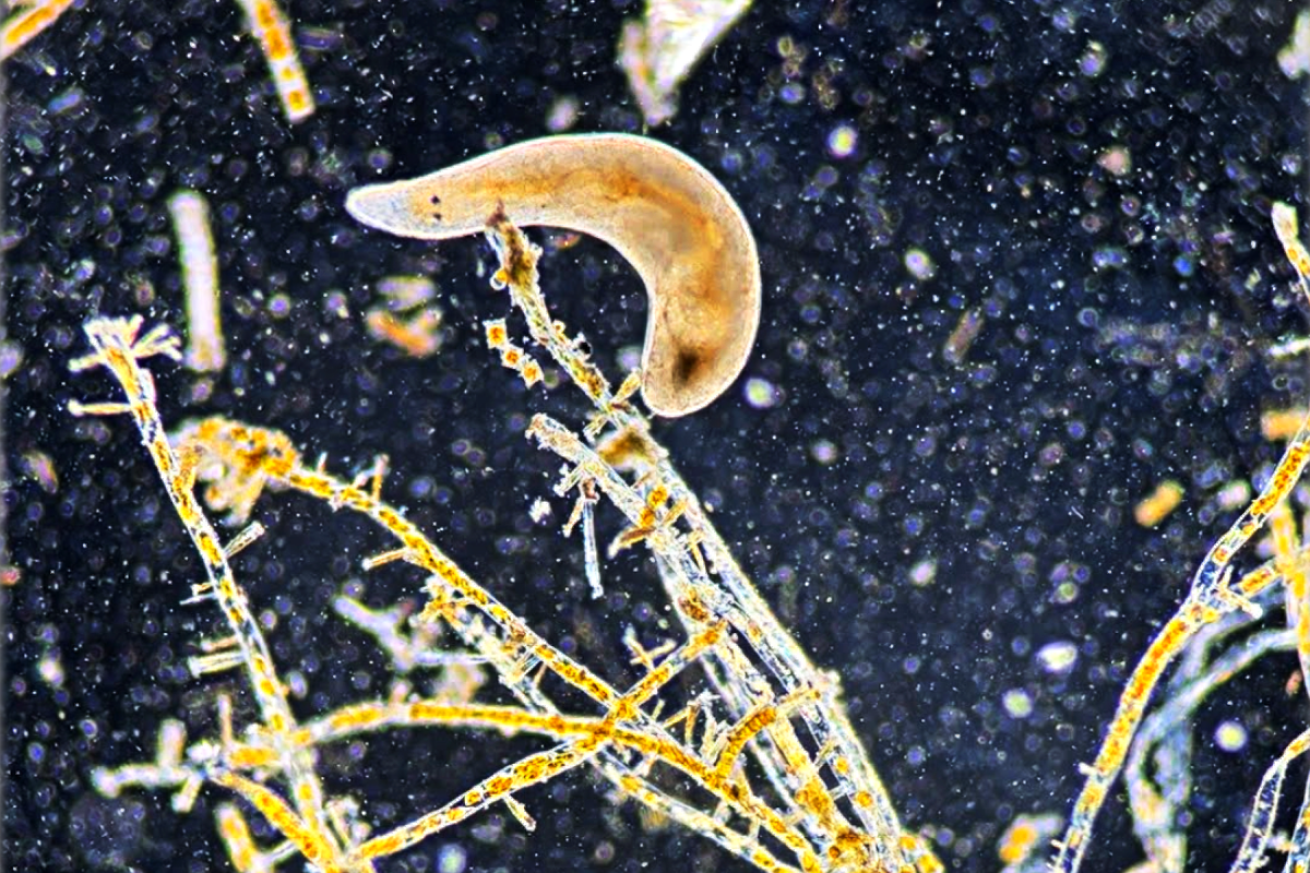
Candice LandauA microscopic ocean flatworm explores the algae under the slide.
At the start of the COVID-19 pandemic, I bought a microscope. With diving instruction halted and social distancing firmly in place I turned to the next best thing: the Instagram doom scroll.
Somewhere between searching for vegan cake recipes and underwater photography tips, I discovered a small but obsessive community of hobby microscopists—people who like to collect things from the natural world and inspect them under a microscope.
I picked through photos and videos of the most peculiar organisms I had ever seen and, like a diver, delved deep into the unknown.

Candice LandauThe author sampling in a ditch... not the ocean but still, a good place to learn.
As scuba divers, we are often mesmerized by the vibrant colors and fascinating behaviors of the more prominent marine life we encounter underwater, from the smallest nudibranch right up to the whale shark. However, there is a whole hidden world teeming with life beyond what our eyes can see – the realm of microscopic organisms. These tiny creatures play a crucial role in maintaining the delicate balance of our marine ecosystems, and they are equally fascinating in their own right.
While I might not be able to make you buy a cheap microscope, I can give you a glimpse into the microcosmos that I have come to love. You don’t need any formal training as a biologist or a scientist, just an open mind and a sense of curiosity. This is dry diving at its finest and if you’re like me, you’ll get that same sense of peace and wonder you so often get when exploring a world few know exists.
These are some of the microscopic organisms every scuba diver should know about.
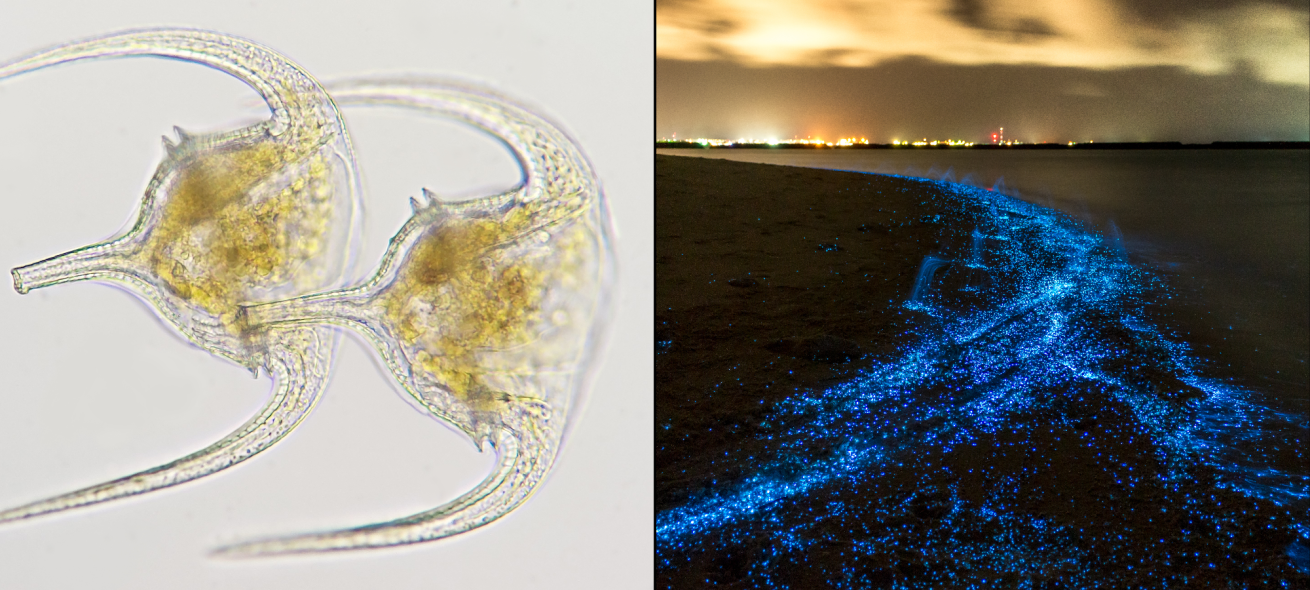
Shutterstock.com/Ekky Ilham, PawelG PhotoFrom left to right: Marine dinoflagellates at 400x magnification. Dinoflagellates in the Maldives emit a beautiful bright blue light defending against copepods.
Phytoplankton: The Unsung Heroes of the Ocean
Phytoplankton are microscopic, single-celled plants and algae that drift in the sunlit layer of the ocean. They are the primary producers in the marine food chain and are responsible for producing over half of the world's oxygen through photosynthesis. As a scuba diver, you may encounter phytoplankton blooms, which can reduce visibility but also create a magical underwater spectacle when they bioluminesce at night.
Related Reading: There's Magic in Low Vis For Divers that Know How to Look
While phytoplankton are important in a balanced system, under certain environmental conditions that cause them to thrive or “bloom” (excess nutrients from pollution runoff, for example), phytoplankton growing on organisms that need sunlight to live—seagrasses and corals—can inadvertently block access to light. Florida, for example, has had and continues to have ongoing problems with algae blooms.
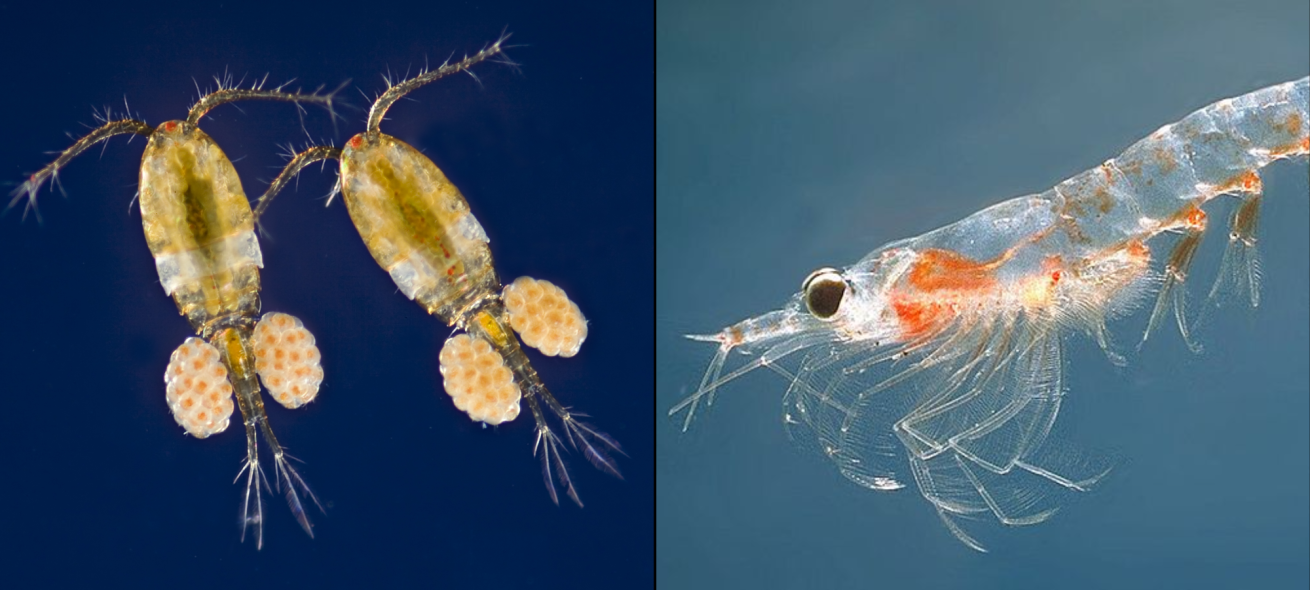
Shutterstock.com/Lebendkulturen.de and MAR-ECO/Øystein PaulsenFrom left to right: Copepods, affectionately known as cyclops with eggs. A northern krill.
Zooplankton: The Invisible Wanderers
Zooplankton are tiny, free-floating animals that play a pivotal role in the marine food web. They consume phytoplankton and, in turn, serve as a primary food source for larger organisms like fish and whales. Zooplankton includes various species such as copepods, krill, and the enchanting sea butterfly, a type of planktonic sea snail with delicate, wing-like appendages that help it "fly" through the water. Divers may find zooplankton fascinating because they serve as an indicator of the health of the marine ecosystem or indeed of marine ecosystem change.
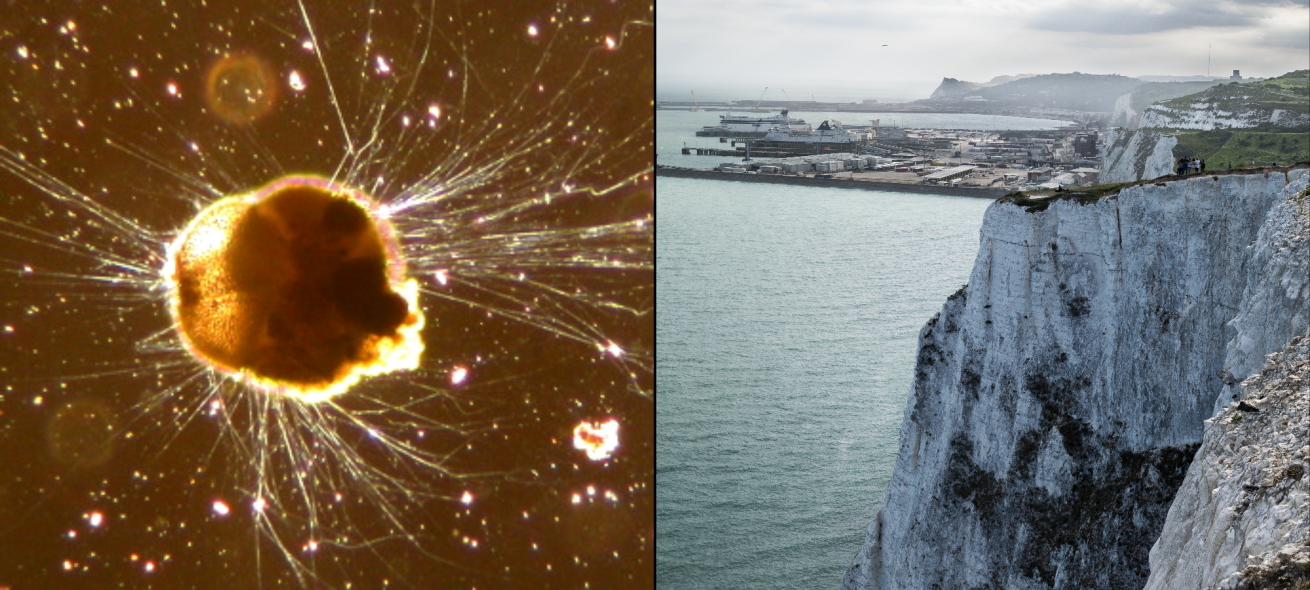
Shutterstock.com/Maple Ferryman and Unsplash.com/Vilmantas BekesiusFrom left to right: A single-celled organism with an external shell. Cliffs of Dover in the United Kingdom with the port of Dover in the background.
Foraminifera: Architects of the Sea
Foraminifera, or "forams" for short, are single-celled protists that create intricate calcium carbonate shells, or "tests," which vary in shape and size. These microorganisms inhabit various marine habitats, from the sunlit surface waters to the dark depths of the abyss. When foraminifera die, their shells accumulate on the ocean floor, eventually forming the basis of limestone and chalk deposits. In fact, the iconic White Cliffs of Dover are primarily composed of foram shells!
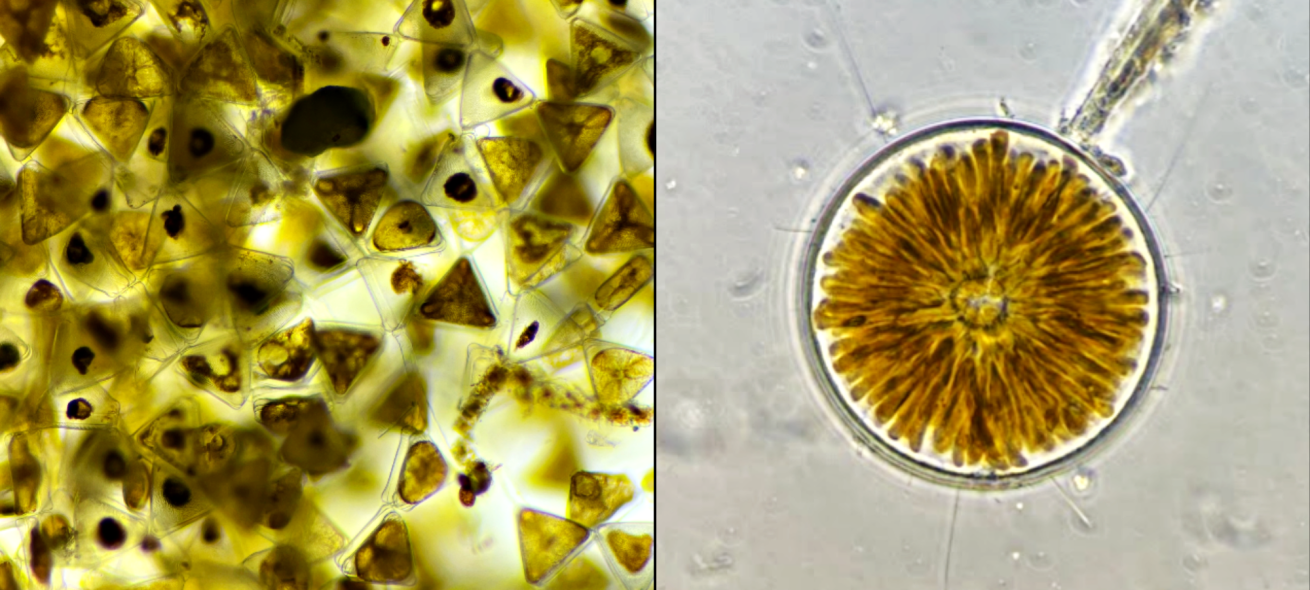
Candice LandauDiatoms from the Puget Sound. Sample taken in 2022.
Diatoms: Nature's Glass Artisans
Diatoms are a diverse group of single-celled algae characterized by their intricate, glass-like cell walls made of silica. These microscopic marvels come in various shapes and sizes, resembling delicate works of art. Diatoms serve as a vital food source for countless marine organisms and play a critical role in the global carbon cycle by sequestering carbon dioxide and producing oxygen.
Marine Viruses: Shapers of the Microbial World
Although the term "virus" might evoke negative connotations, marine viruses are essential players in the ocean's biogeochemical cycles. They are responsible for infecting and killing bacteria, algae, and other microorganisms, recycling nutrients and maintaining a balance within the marine microbial community. In fact, marine viruses are so abundant that they outnumber other microorganisms in the ocean by a factor of ten!
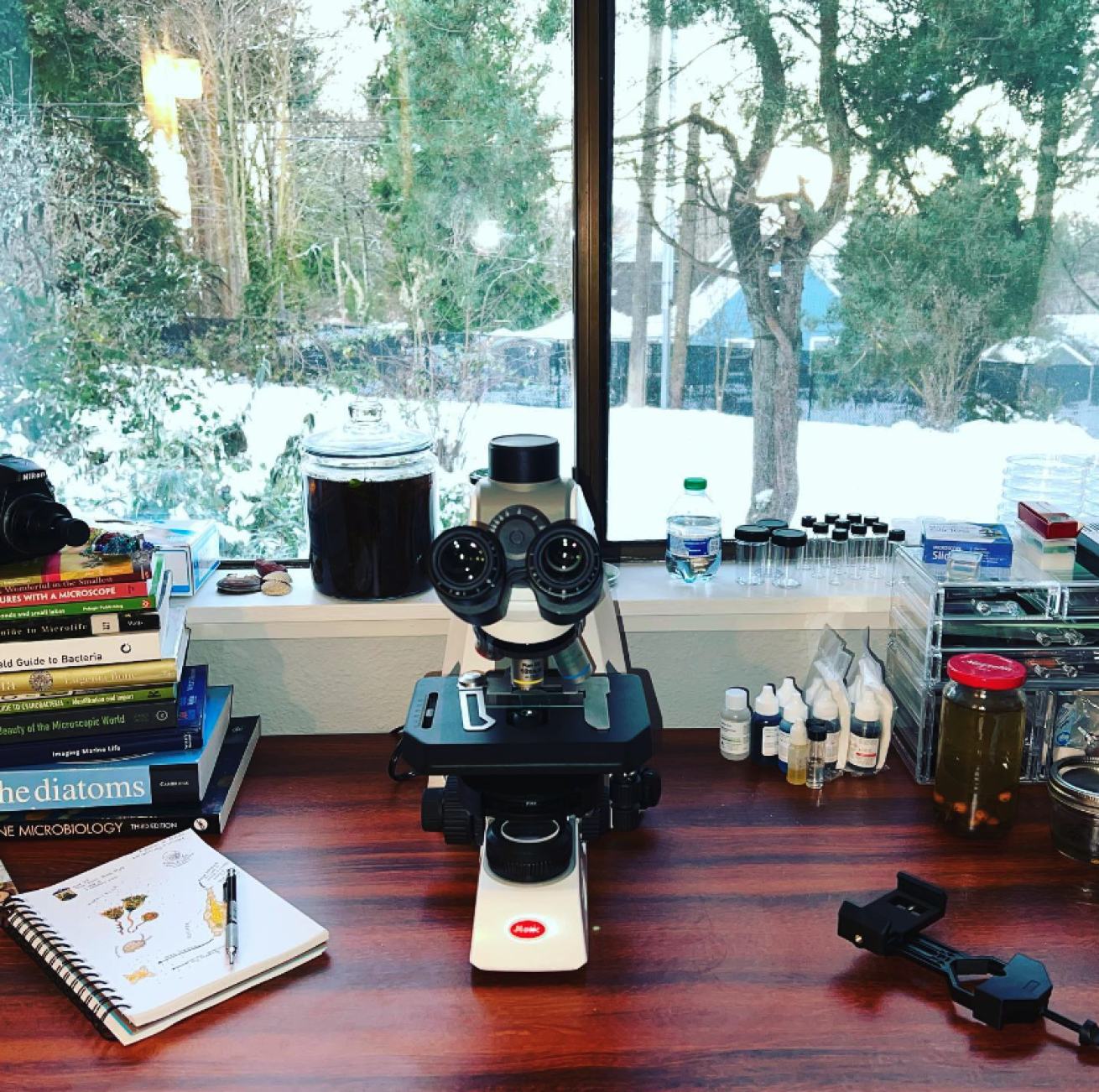
Candice LandauThe author's microscopy desk. Beginner microscopes range from $150 well into the thousands. This is my second microscope.
The world of microscopic organisms is one of wonder and intrigue, offering scuba divers a whole new perspective on the complex web of life beneath the waves. While they may be invisible to the naked eye (buy a cheap microscope!), these tiny creatures are the foundation of the marine ecosystem and have a profound impact on the health of our oceans. As scuba divers, it is essential to understand and appreciate these microscopic marvels, as they serve as a reminder that even the smallest organisms play a significant role in our planet's wellbeing.
Related Reading: Do It Yourself Conservation: How to Count Plankton
If you need further distraction check out: Jam’s Germs, The Joy of Algae, Tardibabe, Marvelous Microscopy, My Microscopic World, and Postgraduate Procrastination.

